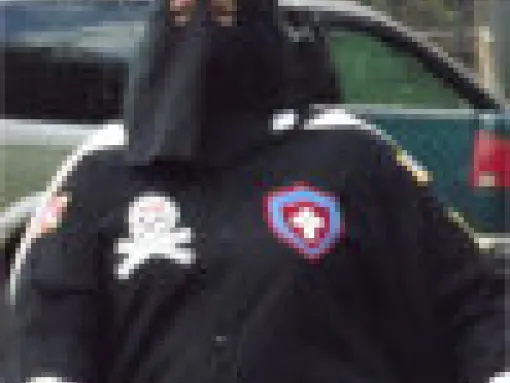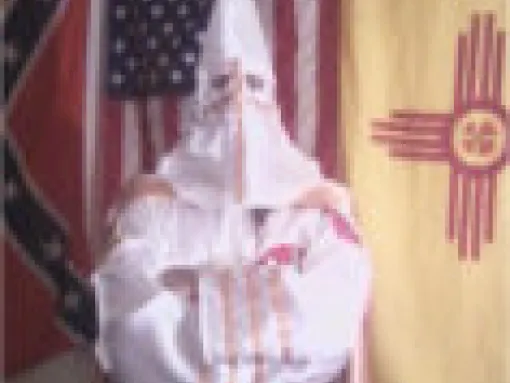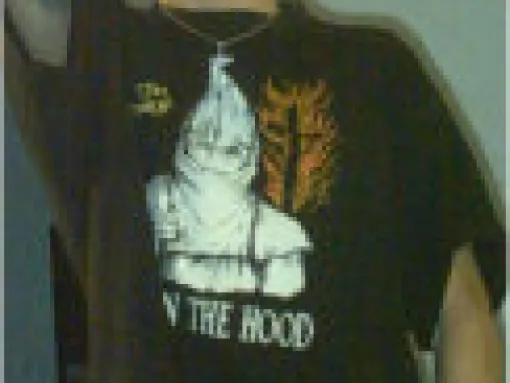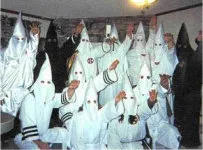Members of the original Ku Klux Klan of the 1860s and 1870s wore masks or hoods and sometimes robes, but it was the second Ku Klux Klan, which started in 1915, which really established the consistent "look" of the hooded and robed Klansmember that is still seen today. Indeed, the image of a hooded Klansman has become a popular hate symbol itself, displayed on t-shirts and tattoos by white supremacists around the world.
The second Ku Klux Klan was heavily influenced by fraternal societies of the early 20th century and as a result developed a bewildering array of titles, rituals, codes, signs, and gear. However, when the second Klan collapsed in the 1940s, and a variety of independent Klan groups followed in its wake, consistency faded away and customs diverged. Today, then, there is no universal set of meanings behind Klan robes and their colors and symbols; Klans can very greatly from one to the next. With most Klan groups, the general membership wear white robes. In some cases, Klan officers also wear white robes, but with colored stripes on them to indicate rank. In other Klan groups, Klan officers are allowed to wear robes of other colors: black, green, purple, etc. What color indicates indicates a particular rank can vary from one group to the next.
Generally speaking, white robes tend to indicate a rank-and-file member, unless all members wear such robes. Green robes indicate state leaders (Grand Dragons) in many Klan groups, while black robes often indicate Knighthawks, a sort of Klan security position. The leaders, or Imperial Wizards, of different Klan groups have chosen a variety of different colors of robes to wear. Klan groups may also use a variety of stripes (in different colors and numbers), sashes, and emblems on their robes.
Some Klan groups require that members wear robes at all Klan events, while other Klan groups mandate robes only at certain ceremonial functions. Some Klan groups may not use robes any more, preferring instead military-style uniforms or simple casual wear.
Additional Images


















